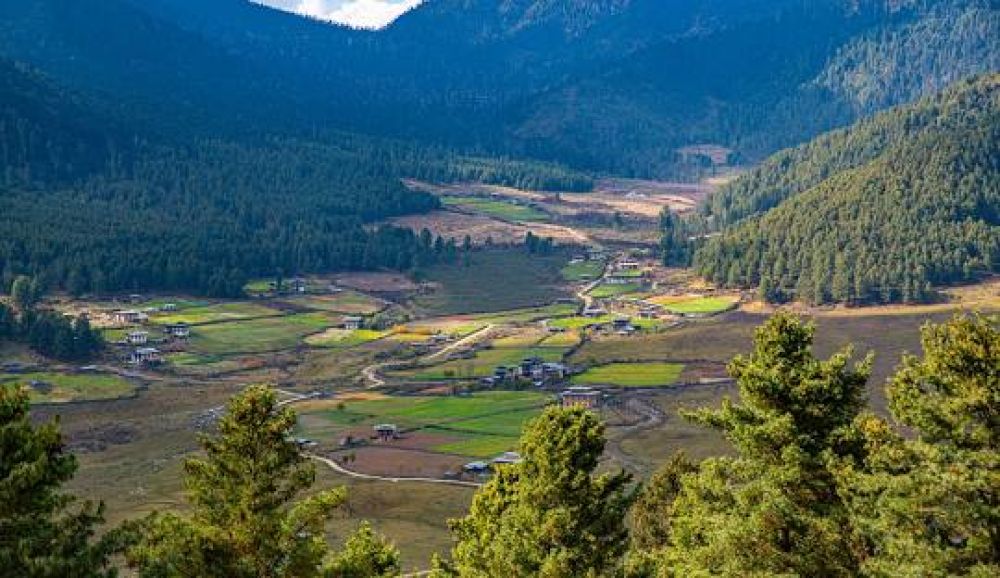

The ideal time to visit Phobjikha Valley in Wangdue Phodrang, Bhutan is during the months of October to early March. This period is marked by clear skies, and pleasant weather conditions - crucial for enjoying the valley's picturesque landscapes and for engaging in outdoor activities such as hiking and bird watching. The crowning jewel of visiting Phobjikha during these months is witnessing the magnificent black-necked cranes. These rare birds migrate from the Tibetan Plateau to Phobjikha Valley, their winter home, typically arriving in late October and departing in early March. This migratory event culminates with the popular Black-necked Crane Festival, held annually on November 11th, which celebrates the crane's arrival with traditional Bhutanese dance, music, and cultural exhibits.
Travelers who prefer a quieter visit might enjoy the spring months of March to May when the valley begins to blossom with wildflowers, and the landscape turns vibrantly green. This season offers a different kind of natural beauty, with moderate temperatures and fewer visitors, although it also brings an increased chance of rain. The off-peak seasons — summer and late spring — can sometimes result in less optimal weather conditions due to the monsoon, with June to September being particularly wet and possibly less conducive to trekking and outdoor exploration. Regardless of when you visit, Phobjikha Valley remains a stunning Bhutanese destination with its rich culture and breathtaking scenery demanding respect and admiration.
| Month | Min Temp | Max Temp |
|---|---|---|
| January | -6 °c | 10 °c |
| February | -3 °c | 10 °c |
| March | 1 °c | 16 °c |
| April | 3 °c | 18 °c |
| May | 6 °c | 20 °c |
| June | 10 °c | 24 °c |
| July | 10 °c | 24 °c |
| August | 10 °c | 25 °c |
| September | 5 °c | 22 °c |
| October | 1 °c | 18 °c |
| November | -2 °c | 15 °c |
| December | -5 °c | 12 °c |